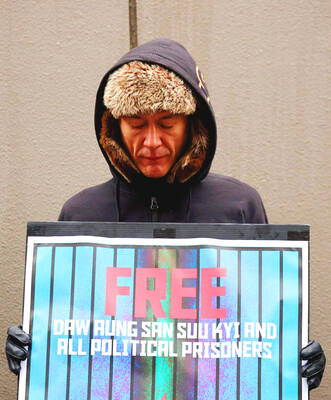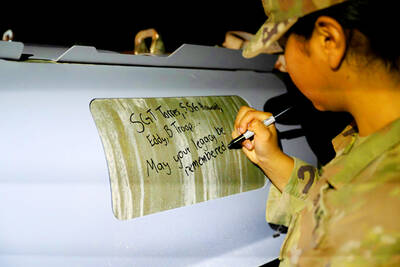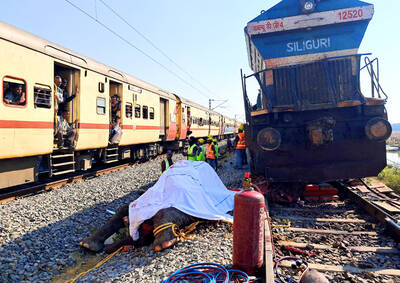Immigration officials grilled British cavers for more than eight hours Friday and inspected their computers before electing to hand them over to federal police, but reported no evidence the group had been doing more than exploring caverns.
In an usually high-level dispute over a visa case, Mexican President Vicente Fox earlier in the day said he was not satisfied with Britain's explanation of what the military-linked caving team had been doing in Mexico.
Academics from Mexico's National University examined the group's equipment, backpacks and computers, said assistant Interior Secretary Armando Salinas.
"They did not find any equipment or information on those computers other than that used for cave exploration," Salinas said.
While Mexican news media suggested the British had been hunting for uranium, the federal Energy Department released a statement late Friday night saying the level of radioactivity in the cavern system the team was exploring was normal and that "no scientific reason exists to believe the zone is rich in radioactive materials."
Even so, federal police were given a chance to question the men on the uranium allegations.
Under Mexican law, immigration authorities often turn suspects over to other agencies for questioning before they are deported or allowed to go free.
If federal prosecutors determine that the men should not be charged, immigration officials would still have to decide whether they violated the terms of their tourist visas, in which case they could be punished by deportation, prohibited from returning to Mexico for several years -- or face fines of up to 3,000 pesos (US$270) or spend 18 months in jail, Salinas said.
Traveling in Nicaragua, Fox said his government had asked Britain for "clear information about what they were doing."
London's response was "frankly, unsatisfactory," the president said.
"We want more clarity about what this affair is about," Fox said.
One state official vowed to keep tighter tabs on foreigners entering under tourist visas, though his state promotes cave tourism.
British and Mexican divers helped the six trapped but unharmed cavers out of the Alpazat caverns, 175km northwest of Mexico City on Thursday, but the controversy over what they were doing underground continued to burn.
Mexican newspapers suggested the cavers were doing more than just exploring, noting they were carrying gas-sensing equipment that might detect uranium. Local cavers said the devices were meant to avoid toxic radioactive gases.
The group also was mapping the caves -- as speleologists normally do -- suggesting they were involved in scientific research.
Organized crime prosecutor Jose Luis Santiago Vasconcelos said federal police were investigating the uranium claim, but said, "We have no evidence, at this moment, of any illegal activity."

The Burmese junta has said that detained former leader Aung San Suu Kyi is “in good health,” a day after her son said he has received little information about the 80-year-old’s condition and fears she could die without him knowing. In an interview in Tokyo earlier this week, Kim Aris said he had not heard from his mother in years and believes she is being held incommunicado in the capital, Naypyidaw. Aung San Suu Kyi, a Nobel Peace Prize laureate, was detained after a 2021 military coup that ousted her elected civilian government and sparked a civil war. She is serving a

REVENGE: Trump said he had the support of the Syrian government for the strikes, which took place in response to an Islamic State attack on US soldiers last week The US launched large-scale airstrikes on more than 70 targets across Syria, the Pentagon said on Friday, fulfilling US President Donald Trump’s vow to strike back after the killing of two US soldiers. “This is not the beginning of a war — it is a declaration of vengeance,” US Secretary of Defense Pete Hegseth wrote on social media. “Today, we hunted and we killed our enemies. Lots of them. And we will continue.” The US Central Command said that fighter jets, attack helicopters and artillery targeted ISIS infrastructure and weapon sites. “All terrorists who are evil enough to attack Americans are hereby warned

Seven wild Asiatic elephants were killed and a calf was injured when a high-speed passenger train collided with a herd crossing the tracks in India’s northeastern state of Assam early yesterday, local authorities said. The train driver spotted the herd of about 100 elephants and used the emergency brakes, but the train still hit some of the animals, Indian Railways spokesman Kapinjal Kishore Sharma told reporters. Five train coaches and the engine derailed following the impact, but there were no human casualties, Sharma said. Veterinarians carried out autopsies on the dead elephants, which were to be buried later in the day. The accident site

‘EAST SHIELD’: State-run Belma said it would produce up to 6 million mines to lay along Poland’s 800km eastern border, and sell excess to nations bordering Russia and Belarus Poland has decided to start producing anti-personnel mines for the first time since the Cold War, and plans to deploy them along its eastern border and might export them to Ukraine, the deputy defense minister said. Joining a broader regional shift that has seen almost all European countries bordering Russia, with the exception of Norway, announce plans to quit the global treaty banning such weapons, Poland wants to use anti-personnel mines to beef up its borders with Belarus and Russia. “We are interested in large quantities as soon as possible,” Deputy Minister of National Defense Pawel Zalewski said. The mines would be part